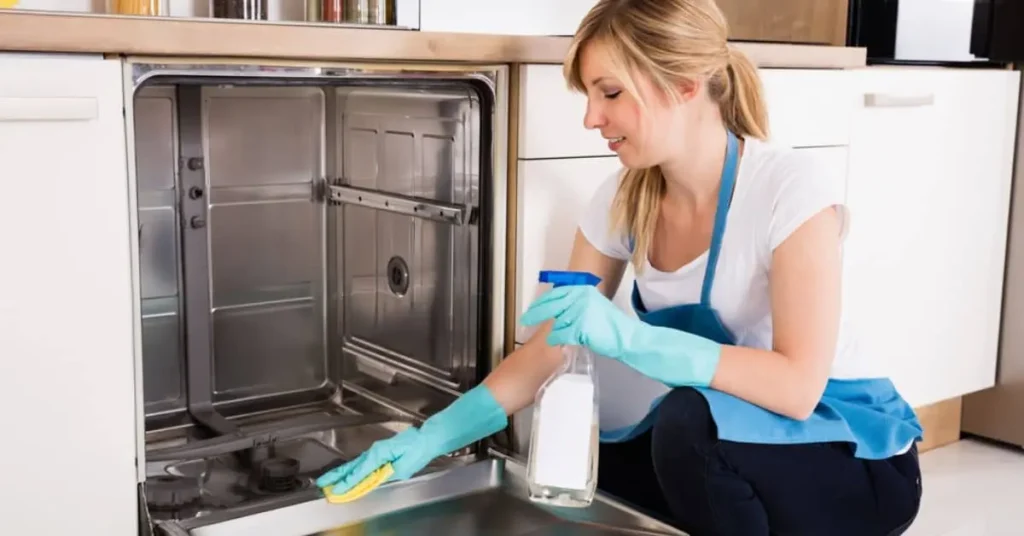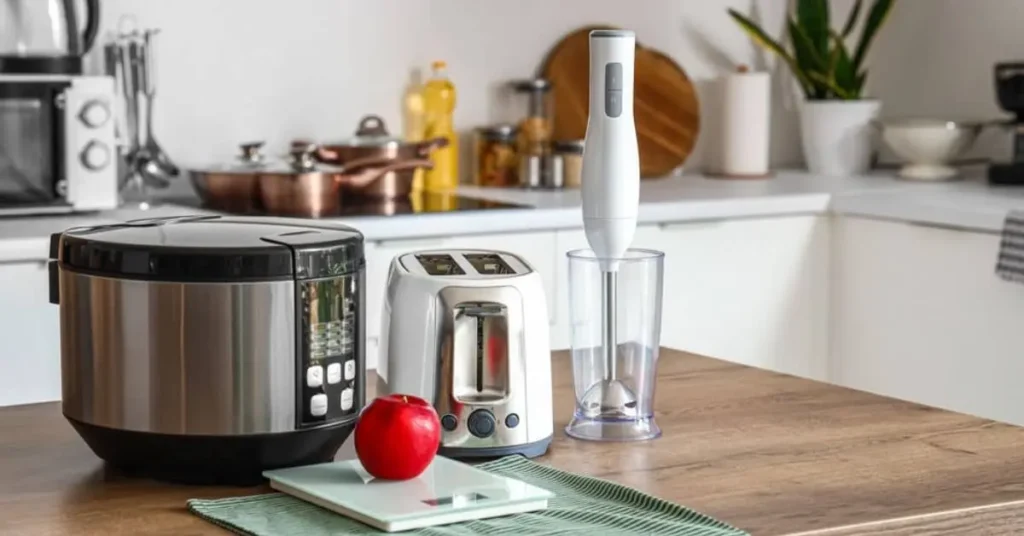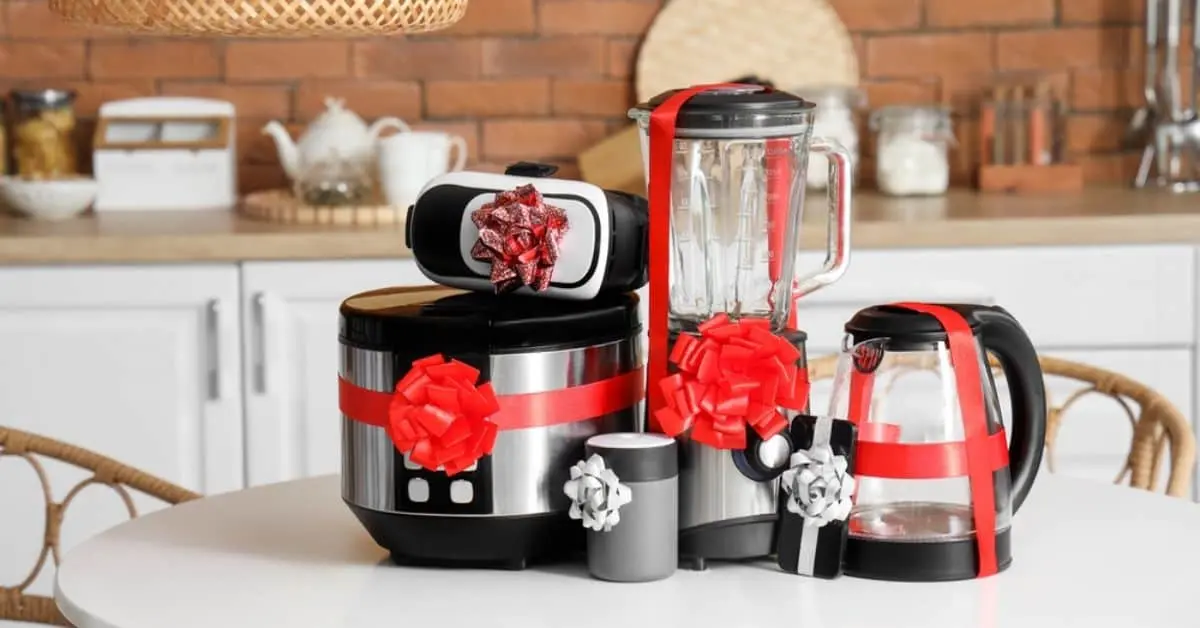Kitchen appliances aren’t cheap, and nothing’s worse than your air fryer or coffee maker breaking down way sooner than expected. The good news? Most of these breakdowns are preventable. With a little care and maintenance, you can keep your appliances running like new for years.
Think about it—when was the last time you deep-cleaned your blender blades or checked your toaster oven for built-up crumbs? Small habits like these can make a huge difference. Proper care not only extends the life of your appliances but also keeps them working efficiently, saving you money in the long run.
In this guide, I’ll walk you through practical, easy-to-follow maintenance tips for every type of kitchen appliance. Whether it’s your air fryer, coffee maker, or mini fridge, I’ve got you covered. Let’s dive in!
General Maintenance Tips for All Kitchen Appliances
Taking care of your kitchen appliances doesn’t have to be complicated. A few simple habits can go a long way in keeping them in top shape. The key? Regular cleaning, proper use, and smart storage. Let’s break it down.

Regular Cleaning and Upkeep
Cleaning your appliances regularly isn’t just about keeping them looking nice—it’s crucial for performance and longevity. Grease, food particles, and mineral buildup can cause serious damage over time.
For small appliances like blenders, coffee makers, and air fryers, always clean them immediately after use. Letting food or liquids sit too long can lead to staining, odors, and even mold. If your appliance has removable parts, wash them thoroughly with warm, soapy water. For non-removable components, wipe them down with a damp cloth and mild cleaner.
Appliances that deal with moisture, like dishwashers and electric kettles, need extra care. Hard water deposits can build up quickly, affecting efficiency. Running a vinegar cycle once a month in your coffee maker or kettle can help break down mineral buildup. The same goes for dishwashers—clean the filter and run an empty cycle with vinegar to keep things fresh.
Don’t forget vents and filters. Air fryers, toaster ovens, and range hoods all have vents that can clog with grease and dust, making them work harder than they should. A quick wipe-down with a degreaser and a soft brush can keep airflow unrestricted.
Proper Usage to Avoid Wear and Tear
Using your appliances the right way is just as important as cleaning them. Most breakdowns happen because of misuse, even if it’s unintentional.
One of the biggest mistakes people make is overloading their appliances. Packing a blender to the brim or stuffing a toaster oven with food can put too much strain on the motor or heating elements. This can cause overheating or uneven cooking. Always follow the manufacturer’s capacity guidelines—your appliances will thank you.
Another common issue is using the wrong settings. High heat on non-stick surfaces, for example, can cause coatings to deteriorate quickly. Blenders and food processors have different speed settings for a reason—using the highest speed for everything isn’t always best. If you’re unsure, refer to the manual. A few minutes of reading can save you from expensive repairs down the line.
Letting appliances cool down before cleaning or storing them is another often-overlooked step. Pouring cold water into a hot air fryer basket or washing a hot toaster oven tray can cause warping or cracks. Give them time to reach room temperature before handling.
Storing Appliances the Right Way
Where and how you store your appliances can make a big difference in their lifespan. Damp, cramped, or overly warm environments can lead to rust, mold, or electrical issues.
For appliances you use daily, keep them on the countertop in a dry, ventilated space. Avoid placing them too close to heat sources like stovetops or ovens, as excessive heat can damage electrical components. If you’re storing them in cabinets, make sure they have enough room to breathe—crowding can lead to scratches, broken parts, or tangled cords.
Smaller appliances like blenders, mixers, and coffee grinders should be stored with their parts properly assembled. This prevents losing essential pieces and keeps everything in good working order. If an appliance has detachable blades or attachments, store them separately in a container to avoid damage.
For seasonal appliances like ice cream makers or deep fryers, it’s best to store them in their original packaging or use dust covers. This protects them from dust and moisture, which can lead to electrical malfunctions. If the appliance has a cord, wrap it neatly to avoid fraying or damage.
Taking the time to store your appliances properly means they’ll be ready to use when you need them—without any unpleasant surprises.
Appliance-Specific Maintenance Tips
Every kitchen appliance has its quirks. While general cleaning and care go a long way, different appliances require different maintenance routines. A toaster oven doesn’t need the same attention as a blender, and a coffee maker has entirely different cleaning needs than an air fryer. Let’s break it down by category so you can keep each appliance in top shape.

Cooking Appliances (Air Fryers, Pressure Cookers, Toaster Ovens, etc.)
Cooking appliances get a lot of use, which means they need regular upkeep. Food residue, grease, and heat exposure can cause performance issues if not properly maintained.
Air fryers need frequent cleaning, especially the basket and heating element. After each use, let the basket cool before washing it with warm, soapy water. Avoid abrasive sponges that can damage the non-stick coating. Every few weeks, check the heating coil for grease buildup. A soft brush or damp cloth can help remove any residue that might cause smoking or uneven heating.
Pressure cookers rely on their sealing rings and valves to function correctly. Always inspect the silicone ring for cracks or warping—if it looks worn out, replace it. The steam release valve should be free of food debris; soaking it in warm, soapy water helps keep it clear. If your pressure cooker starts taking longer to build pressure, check for clogs in the steam vents.
Toaster ovens collect crumbs and grease over time, which can turn into a fire hazard. Empty the crumb tray after each use and wipe down the interior weekly. For stubborn grease stains on the glass door, a baking soda paste works wonders. Never use metal utensils to scrape off stuck food, as this can damage the interior lining.
Food Preparation Appliances (Blenders, Food Processors, Mixers, etc.)
Blades, motors, and attachments make these appliances prone to wear and tear. A little maintenance ensures they stay sharp and work efficiently.
Blenders should be rinsed immediately after use to prevent food from drying onto the blades. For a deep clean, fill the jar with warm water and a drop of dish soap, then run the blender for 30 seconds. If your blender has a rubber gasket, remove and clean it separately to prevent mold buildup.
Food processors need extra attention on the lid and feed tube, where food particles tend to hide. Hand wash all removable parts instead of putting them in the dishwasher—high heat can warp plastic components. Also, make sure the blades are completely dry before reassembling to prevent rust.
Stand mixers require occasional lubrication to keep the motor running smoothly. If you notice a squeaking sound, it may be time to check the gears. Also, clean the attachment hub regularly, as dried batter or dough can cause attachments to stick.
Beverage Appliances (Coffee Makers, Electric Kettles, Juicers, etc.)
Beverage appliances deal with constant heat and moisture, which means they need regular descaling and mold prevention.
Coffee makers should be descaled monthly, especially if you have hard water. Run a mixture of equal parts white vinegar and water through the machine, followed by a rinse cycle with plain water. Don’t forget to clean the coffee filter basket and water reservoir, as these areas can collect mold and mineral deposits.
Electric kettles also suffer from mineral buildup. To descale, fill the kettle with a mixture of vinegar and water, let it sit for an hour, then boil it. Rinse thoroughly to remove any vinegar taste. If your kettle has a mesh filter, remove and clean it periodically to prevent clogging.
Juicers should be cleaned immediately after use. Dried fruit pulp can be difficult to remove and can lead to bacterial growth. If your juicer has a fine mesh filter, soak it in warm, soapy water to dissolve any stubborn residue.
Breakfast Appliances (Toasters, Waffle Makers, Egg Cookers, etc.)
Breakfast appliances often have non-stick surfaces that require gentle cleaning.
Toasters accumulate crumbs quickly, which can burn and create a smoky mess. Empty the crumb tray at least once a week and shake out any trapped debris. If you notice uneven toasting, the heating elements may need a gentle wipe with a dry cloth.
Waffle makers should never be submerged in water. Instead, wipe the plates with a damp cloth after each use. If batter sticks to the surface, let the waffle maker cool, then use a soft brush to remove the residue.
Egg cookers can develop mineral buildup from boiling water. Descale them regularly with vinegar and water to prevent heating issues.
Specialty & Smart Appliances (Bread Makers, Ice Cream Makers, Smart Ovens, etc.)
These appliances often have delicate components that need extra care.
Bread makers should be cleaned after every use, especially the kneading paddle and baking chamber. If dough gets stuck, let it dry before gently scraping it off. Avoid using metal utensils that can scratch the non-stick pan.
Ice cream makers have freezer bowls that need to be completely dry before storing. Any leftover moisture can cause ice crystals to form, affecting the texture of your ice cream. Store the bowl in a plastic bag to prevent odors from the freezer from seeping in.
Smart ovens rely on sensors and software updates to function properly. Keep the sensors clean to ensure accurate cooking temperatures. Check for firmware updates periodically, as these can improve performance and fix bugs.
Refrigeration & Storage Appliances (Mini Fridges, Wine Coolers, etc.)
Cooling appliances work best when they have proper ventilation and temperature control.
Mini fridges should be defrosted regularly if they don’t have an automatic defrost function. Too much frost buildup can block airflow and reduce efficiency. Keep the vents clear and avoid overpacking the fridge, as this can strain the compressor.
Wine coolers need stable temperatures to keep wine in good condition. Make sure the door seal is intact to prevent temperature fluctuations. Cleaning the condenser coils every six months helps maintain efficiency.
Vacuum sealers require occasional gasket and sealing strip replacements. If you notice air getting into sealed bags, check for worn-out parts and replace them as needed.
Cleaning & Maintenance Appliances (Dishwashers, Garbage Disposals, etc.)
These appliances deal with food waste and water exposure, making regular cleaning essential.
Dishwashers have filters that need to be cleaned at least once a month. A clogged filter can lead to poor drainage and unpleasant odors. Running an empty cycle with vinegar and baking soda helps remove grease buildup. Also, check the spray arms for clogs, as blocked holes can affect water flow.
Garbage disposals work best when they’re used properly. Avoid grinding fibrous foods like celery or potato peels, as these can tangle the blades. To keep odors away, grind ice cubes and lemon peels every few weeks. If your disposal starts to smell bad, pouring baking soda and vinegar down the drain can help neutralize odors.
Kitchen composters need regular emptying and filter changes to prevent smells. If the compost bin starts to develop mold, wipe it down with a mixture of vinegar and water before refilling it.
Common Mistakes That Shorten Appliance Lifespan
Even the best kitchen appliances won’t last forever, but they should at least give you several good years of use. Unfortunately, many people unknowingly shorten their appliances’ lifespan with small but costly mistakes. The good news? Most of these are easy to avoid once you know what to look out for.

Neglecting Regular Cleaning
Dirt, grease, and food residue don’t just make appliances look bad—they also cause serious performance issues. Built-up grease in an air fryer can lead to smoking and overheating. Coffee makers clogged with mineral deposits will brew weaker coffee over time. Crumbs in a toaster oven can become a fire hazard.
Regular cleaning prevents these issues, but skipping it can force your appliance to work harder, causing wear and tear on the internal components. Set a schedule to clean each appliance properly—whether it’s a quick wipe-down after use or a deep clean every few weeks.
Overloading Appliances
It’s tempting to cram as much food as possible into a blender, air fryer, or pressure cooker, but this puts unnecessary strain on the motor or heating elements. Overloading can cause poor performance, uneven cooking, and in some cases, total motor failure.
For appliances like dishwashers, stuffing too many dishes can block water flow, leading to ineffective cleaning and potential breakdowns. Always follow capacity guidelines—your appliance will last longer, and your food will cook or blend more evenly.
Using the Wrong Cleaning Methods
Not all appliances can handle harsh scrubbing or strong chemicals. Using abrasive sponges on non-stick waffle makers, griddles, or air fryer baskets can wear down the coating, making them stickier over time.
Similarly, soaking electrical components in water (like the base of a blender or the motor of a food processor) can lead to damage. Always check the manual for proper cleaning instructions. When in doubt, stick to mild dish soap, warm water, and a soft sponge.
Ignoring Manufacturer Guidelines
Most people don’t read appliance manuals, but those little booklets contain important details about maintenance, usage limits, and safety precautions. Running a microwave empty, using metal utensils in a non-stick pan, or overfilling a rice cooker are all things that seem harmless but can cause long-term damage.
Ignoring the manual can also lead to improper settings. For example, using high heat on a slow cooker meant for low-temperature cooking can warp the ceramic pot. Taking a few minutes to check the recommended usage can prevent expensive mistakes.
Skipping Routine Maintenance
Some appliances require more than just cleaning—they need regular maintenance to keep working efficiently.
- Coffee makers and kettles need monthly descaling to prevent mineral buildup.
- Vacuum sealers require occasional gasket replacement to maintain airtight sealing.
- Dishwasher filters should be cleaned every few weeks to prevent clogs.
Skipping these small but essential tasks can lead to poor performance and shorten your appliance’s lifespan.
Storing Appliances Improperly
Where you store your appliances matters. Leaving a mini fridge in a hot, unventilated space forces the compressor to overwork. Storing a blender with wet parts can lead to mold growth. Wrapping power cords too tightly around toasters or coffee makers can cause fraying and electrical issues.
For rarely used appliances like ice cream makers or bread machines, storing them in a clean, dry place (preferably in their original packaging) can keep them in good condition.
Proper storage plays a huge role in extending the lifespan of your kitchen appliances. Keeping them in a clean, dry space and avoiding tangled cords or stacked pressure can prevent damage over time. If you want to know the best ways to store small kitchen appliances, check out this detailed guide to keep them organized and in top shape.
Using Faulty or Cheap Replacement Parts
If an appliance part breaks, it’s tempting to grab a cheap replacement online. But not all parts are created equal. Using non-branded, low-quality seals, filters, or blades in pressure cookers, coffee machines, or food processors can lead to leaks, inefficient performance, or even safety hazards.
Always opt for manufacturer-approved or high-quality third-party parts to ensure compatibility and longevity.
Letting Small Issues Go Unchecked
A slightly cracked blender jar, a toaster that only heats on one side, or a dishwasher that makes strange noises may not seem like a big deal. But these small issues can escalate if ignored.
If your appliance starts acting up, address the problem early. In many cases, a quick fix—like replacing a seal, unclogging a vent, or tightening a loose screw—can prevent a full breakdown.
When to Repair vs. Replace Your Kitchen Appliances
At some point, every kitchen appliance starts acting up—your blender struggles to crush ice, your coffee maker takes forever to brew, or your toaster only browns one side of the bread. The big question is: should you repair it or replace it? Let’s break it down so you can make the best decision without wasting money.
Signs It’s Worth Repairing
Not every malfunction means the end of an appliance. Sometimes, a quick fix is all it takes to get it working like new again. Here’s when a repair makes sense:
- It’s a minor issue. If your blender blades are dull, your air fryer’s basket is peeling, or your coffee maker’s filter is clogged, these are easy, low-cost fixes.
- Replacement parts are affordable. If the cost of a new seal, gasket, or filter is low (typically under 50% of the appliance’s price), it’s usually worth repairing.
- The appliance is relatively new. If your appliance is still within its expected lifespan (e.g., under five years for a toaster oven, under 10 years for a dishwasher), a repair can extend its use for several more years.
- It’s still under warranty. Many appliances come with 1- to 3-year warranties. If yours is covered, the manufacturer may offer a free or discounted repair.
Common Repairs That Are Worth It:
- Blender: Replacing worn-out blades or a leaking gasket.
- Air Fryer: Fixing a loose fan or cleaning a clogged heating coil.
- Coffee Maker: Descaling to remove mineral buildup or replacing a broken carafe.
- Toaster Oven: Fixing a faulty timer or replacing the heating element.
If a simple part replacement can solve the problem, repairing is often the better choice.
Signs It’s Time to Replace
Sometimes, fixing an appliance isn’t worth the hassle—especially when repairs start costing as much as a new model. Here’s when you’re better off replacing it:
- The repair cost is too high. If fixing an appliance costs more than 50% of the price of a new one, replacement is usually the smarter option.
- It’s near the end of its lifespan. Every appliance has a general lifespan. If yours is already 75% through its expected life, a replacement might be a better investment.
- It keeps breaking down. If you’ve repaired an appliance multiple times and new problems keep popping up, it’s a sign it’s on its last legs.
- It’s outdated or inefficient. Older appliances often use more energy or lack modern features that make life easier. Newer models can be more energy-efficient and perform better overall.
- It’s unsafe to use. If an appliance has exposed wiring, faulty heating elements, or a broken motor, it can be a fire hazard or electrical risk. It’s better to replace it than take chances.
When Replacing Is the Best Option:
| Appliance | Typical Lifespan | When to Replace |
| Blender | 5-10 years | If the motor is burned out or jar is cracked |
| Air Fryer | 3-5 years | If the heating element fails or fan stops working |
| Coffee Maker | 5-10 years | If it brews inconsistently despite cleaning |
| Toaster Oven | 5-8 years | If it won’t heat evenly or door won’t close |
| Dishwasher | 10-15 years | If it leaks, doesn’t drain, or needs frequent repairs |
| Mini Fridge | 8-12 years | If it doesn’t maintain temperature or compressor fails |
If your appliance falls into the “replace” category, it’s worth shopping around for a newer, more efficient model.
Repair or Replace? Quick Cost Comparison
Still not sure? Here’s a simple rule:
- If the repair is less than 50% of the cost of a new appliance, repair it.
- If the appliance is old, unreliable, or expensive to fix, replace it.
For example:
- A $150 blender with a $30 blade replacement? Repair.
- A $50 toaster with a $40 heating element repair? Replace.
- A $500 dishwasher with a $250 motor replacement? Depends on the age—but likely replace.
FAQs About Extending the Life of Kitchen Appliances
How often should I clean my kitchen appliances?
It depends on the appliance. Daily-use appliances like coffee makers, blenders, and air fryers should be cleaned after every use. Others, like dishwashers and refrigerators, should be deep cleaned monthly. Descale kettles and coffee machines every 1-3 months to prevent mineral buildup.
What’s the best way to prevent kitchen appliances from breaking down?
Regular cleaning, proper usage, and routine maintenance are key. Avoid overloading blenders, air fryers, and dishwashers. Store appliances in dry areas and follow manufacturer instructions for maintenance, like changing filters or gaskets when needed.
Is it safe to use generic replacement parts for appliances?
Not always. Cheap, off-brand parts may not fit properly and can cause leaks, inefficiency, or even safety hazards. When replacing parts (like blender blades, coffee maker filters, or pressure cooker seals), stick to manufacturer-approved or high-quality third-party replacements.
How can I tell if an appliance is worth repairing?
If the repair costs less than 50% of a new appliance, it’s usually worth fixing. Also, consider the age—if it’s near the end of its lifespan, replacement might be a better long-term investment.
Can power surges damage kitchen appliances?
Yes! Power surges can fry circuit boards in appliances like coffee makers, air fryers, and smart ovens. Use surge protectors for expensive or electronic-heavy appliances to prevent damage.
Do kitchen appliances need descaling?
Absolutely. Coffee makers, electric kettles, and steam ovens build up mineral deposits over time, which can affect performance. Descale these appliances every 1-3 months, depending on how hard your water is. Use a vinegar solution or a manufacturer-recommended descaling product.
Conclusion
Taking care of your kitchen appliances isn’t just about keeping them clean—it’s about using them properly, maintaining them regularly, and knowing when to repair or replace them. A little effort goes a long way in preventing breakdowns and saving money in the long run. Simple habits like cleaning after use, avoiding overloading, storing appliances properly, and descaling when necessary can add years to their lifespan. And when something goes wrong, a quick repair is often all you need—unless the cost is too high or the appliance is past its prime.





